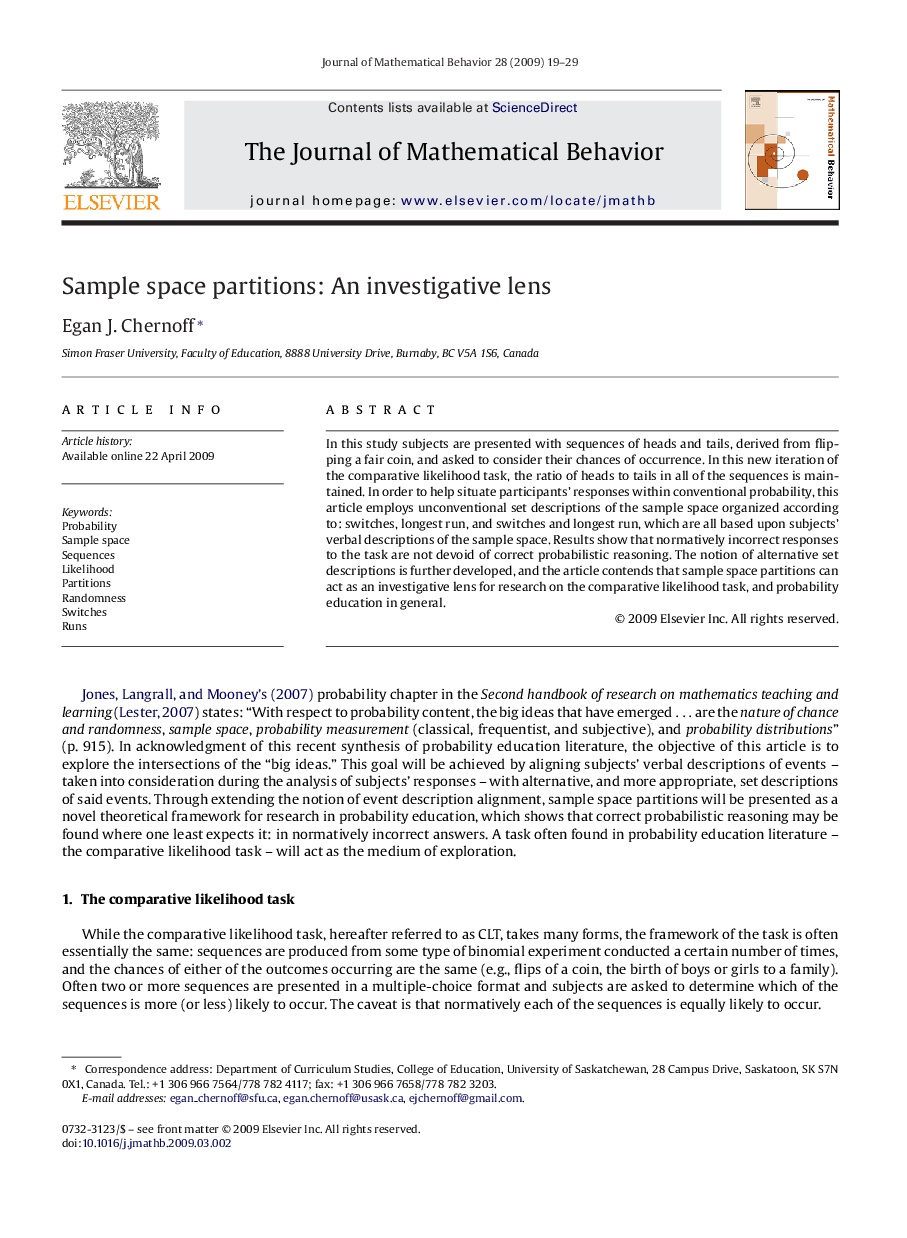| Article ID | Journal | Published Year | Pages | File Type |
|---|---|---|---|---|
| 360891 | The Journal of Mathematical Behavior | 2009 | 11 Pages |
In this study subjects are presented with sequences of heads and tails, derived from flipping a fair coin, and asked to consider their chances of occurrence. In this new iteration of the comparative likelihood task, the ratio of heads to tails in all of the sequences is maintained. In order to help situate participants’ responses within conventional probability, this article employs unconventional set descriptions of the sample space organized according to: switches, longest run, and switches and longest run, which are all based upon subjects’ verbal descriptions of the sample space. Results show that normatively incorrect responses to the task are not devoid of correct probabilistic reasoning. The notion of alternative set descriptions is further developed, and the article contends that sample space partitions can act as an investigative lens for research on the comparative likelihood task, and probability education in general.
